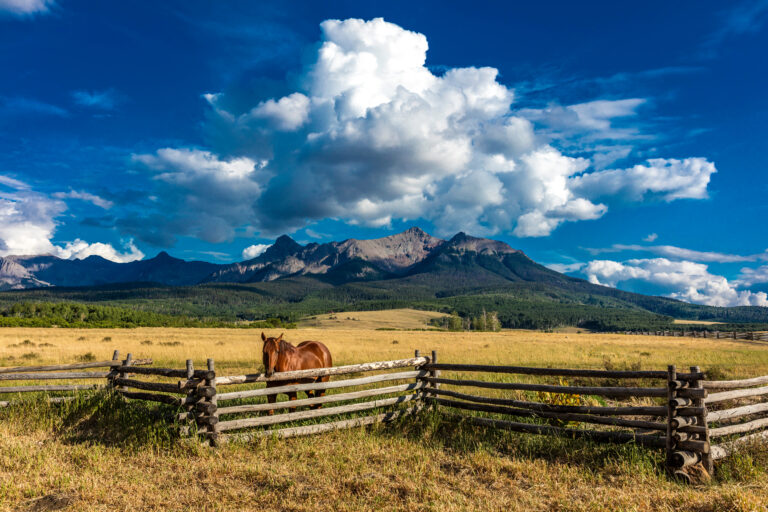This article is part of our Safe Property; Happy Horse Awareness Week brought to you by Bekaert Fencing.
A lush, green pasture is an important part of a horse’s nutritional program. The healthier your grass is, the more vitamins and nutrients your horse will gain from eating it. Plus, vigorously growing grass will be able to compete better against weeds. They’ll be able to survive periods of stress caused by weather, insects, and diseases. Short, overgrazed pasture grasses are usually high in sugar and low in fiber. This combination can lead to metabolic disturbances. In addition, overgrazed pastures develop bare spots that contribute to soil erosion. Weakened plants will be replaced by weeds and potentially toxic species.

Why Overgrazing is Harmful
Summer Slump: Most pastures are seeded with cool-season grasses. The benefit being that they grow thick and lush, perfect for grazing your horses. Cool-season grasses thrive in cooler temperatures between 60 and 80 degrees. In the spring and fall, when temperatures are in this ideal range, growth takes off. When the weather starts to warm up, growth slows down to a crawling rate often referred to as the “summer slump.” If the growth of the grass doesn’t meet or exceed the rate that your horses graze, you may run into trouble with overgrazing.
At the Root: When horses graze, they remove the leaf and stem of the grass, leaving the root intact. It’s from the root that the grass gets nutrients to regrow. To support that process, the plant, or grass, must have enough stem to capture sunlight. When the grass is eaten down, there’s less surface area to catch light to process nutrients. This makes the already slowed process of regrowth even slower. Without the proper nutrients, the grass’ root system weakens, making it harder for the plant to grow. In time, if the cycle of grazing or cutting the grass down to the root continues, the plant weakens until it dies or until water and erosion wipe it out.
Pasture Maintenance Musts
Maintain good length. Ensure that the pasture’s grass maintains adequate length to synthesize nutrients. A good rule is to leave the bottom four inches of the grass for growth. Any length beyond that can be spared for your horse. Once the grass has been grazed down to four inches, remove your horse. Let it grow back to eight or more inches before turning out onto it again.
Keep a close eye. It’s common to think that horses will naturally gravitate toward longer grass after they’ve grazed down other areas. This isn’t the case. Instead, they’ll continue to graze the shorter grasses because of the lush (and tasty), new regrowth. An indicator that your pasture is being overgrazed is if there’s an uneven growth pattern.
Diversify your grass. While warm-weather grasses can be difficult to establish, by diversifying the grass in your pasture, you can reduce the mid-summer slump. This allows warm-weather grasses to take over until temperatures become milder, and optimized for those cool-weather grasses, in the spring or fall.
Tips for Mud
We talked with Barb Crabbe, DVM to find out some of the best tips to avoid harm caused by mud.
Feed carefully.
Never feed horses on grass or pre-existing mud. Instead, feed in feeders placed on gravel (or whatever footing you’ve chosen). Feeding hay on the grass pasture will contribute to vegetation breakdown, and leftover hay scraps will break down in the soil. This adds organic material to the mix and makes mud worse.
Don’t overcrowd.
Perhaps the most important factor for keeping pastures in good shape and paddocks mud-free is to avoid overcrowding. Horses are big, active animals—often wearing steel shoes as they cavort in the pasture, tearing up the grass and churning up the mud. They’re also extremely efficient grazers and will graze grass very short, which will contribute to vegetation breakdown. There’s no doubt about it: Less horse traffic means less mud. As a rule of thumb, each horse should have between one and two acres of pasture available for a full-time turned-out lifestyle.
Schedule rest.
Even if you’re able to keep numbers down, it’s important that your pastures or paddocks have periods of complete rest each year. Plan your turnout so that you always leave an empty space. Each turnout area will usually require at least a month or two of rest each year. Consider more if it’s very broken down or in bad shape. If it isn’t possible to rest a pasture completely, block off areas that need rejuvenation with temporary fencing to give grass a chance to regrow.






